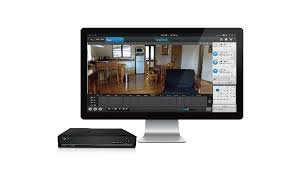Analog PTZ Cameras Explained
Analog PTZ Cameras Explained
Analog PTZ cameras, while not as technologically advanced as their IP counterparts, were historically a popular choice for security systems requiring a wider range of motion and focused views. Here's a breakdown of their key characteristics and how they compare to IP PTZ cameras:
Functionality:
Pan-Tilt-Zoom: Similar to IP PTZ cameras, they offer pan, tilt, and zoom functionalities for comprehensive monitoring of large areas.
Remote Control: Control the camera movement remotely using a joystick, keyboard, or control panel connected to the DVR.
Presets: Program the camera to move to predefined positions for quick access to critical areas.
Technology:
Analog Video Output: Transmit video signals in analog format over coaxial cables to a Digital Video Recorder (DVR) for recording and monitoring.
Standard Definition (SD) Resolution: Limited to standard definition (SD) resolution, resulting in lower quality video footage compared to IP cameras.
Limited Features: Generally offer fewer features compared to IP PTZ cameras. Some models might have basic features like varifocal lenses and day/night functionality.
Advantages:
Lower Cost: Traditionally, analog PTZ cameras were a more cost-effective option compared to IP PTZ cameras.
Disadvantages Compared to IP PTZ Cameras:
Lower Image Quality: SD resolution offers less detail and clarity, making it difficult to identify faces or license plates.
Limited Scalability: Expanding an analog system requires additional complex cabling for each new camera.
Outdated Technology: Analog camera technology is considered less advanced and offers fewer features.
No Remote Access: Video footage can typically only be accessed from the location where the DVR is installed.
Limited Integration: Integration with other security systems might be limited compared to IP PTZ cameras.
Applications:
Suitable for: Older security systems or situations where cost is a primary concern. They can still be adequate for basic monitoring of large areas.
Current Use:
Less Common: With the decreasing cost of IP cameras and their significant advantages, analog PTZ cameras are becoming less common in new security system installations.
Choosing an Analog PTZ Camera (if still considering):
Resolution: While all are SD, some models might have slightly higher resolution within the analog standard.
Night Vision: Consider the required night vision range for your environment.
Weatherproofing: Ensure it's suitable for outdoor use if needed.
Features: Some models might have varifocal lenses or day/night functionality.
While analog PTZ cameras are a less technology choice compared to IP PTZ cameras, if you're still considering them due to budget constraints, here's a guide to help you choose one:
Factors to Consider:
Resolution: Even though all analog PTZ cameras offer standard definition (SD) resolution, some models might have slightly higher resolution within that standard (e.g., 960H). While not a significant difference, it can provide a marginally better image.
Night Vision: Consider the required night vision range for your environment. Analog PTZ cameras typically use infrared (IR) illuminators for night vision, but the image quality and range will be inferior to newer starlight night vision technology found in IP cameras.
Weatherproofing: If you plan to use the camera outdoors, ensure it has a weatherproof housing to withstand rain, snow, and extreme temperatures.
Features: Some analog PTZ cameras might offer a few basic features beyond pan-tilt-zoom functionality:
Varifocal Lens: Allows manual adjustment of the focal length to change the field of view and focus on specific areas.
Day/Night Functionality: The camera automatically switches between color mode for daytime and black and white night vision mode with IR illuminators.
Additional Considerations:
Cost: Analog PTZ cameras should be a more affordable option compared to IP PTZ cameras. However, the price difference might be narrowing as IP camera technology becomes more cost-effective.
Scalability: Adding new cameras to an analog system is complex. Each camera requires its own coaxial cable run, making expansion difficult and expensive.
Future-proofing: Analog camera technology is maturing, but it offers limited potential for future upgrades or integration with newer smart security systems.
Alternatives:
Used IP PTZ Cameras: Consider exploring the market for used IP PTZ cameras from reputable vendors. You might find a good deal on an IP camera that offers superior features and future-proof technology compared to a new analog PTZ camera.
In Conclusion:
Choosing an analog PTZ camera might be a budget-driven decision. While they can still provide basic functionality for monitoring large areas, be aware of the significant limitations in image quality, features, scalability, and future-proofing compared to IP PTZ cameras. If possible, consider exploring the market for used IP PTZ cameras or plan to upgrade to an IP camera system in the future for a more robust and future-proof security solution.
While analog PTZ cameras might seem like a budget-friendly option, the lower image quality, limited features, and lack of scalability make them a less attractive choice in today's security landscape. For a future-proof and feature-rich security system, IP PTZ cameras offer a significantly better value despite the initial higher cost.




Comments
Post a Comment